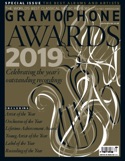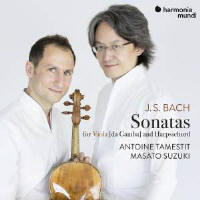Texte paru dans: / Appeared in: |
|
|
Outil de traduction (Très approximatif) |
|
|
Reviewer:
Mark Seow
Antoine Tamestit makes a luscious sound too. His playing is bold and elegant
– everything you would expect from an international solo viola player, of which
there are only a handful on a good year. The Allegro ma non tanto from
the Sonata in G, BWV1027, is buoyant, and Tamestit on the ‘Mahler’ Stradivarius
of 1672 makes a resplendent sound. But there are moments, particularly during
contrapuntal exchange, when I wonder whether this is a true synthesis of styles
at work. Tamestit leaves ties – a ubiquitous rhythmic feature in Bach’s
counterpoint – with an accent, demonstrating a prioritisation of rhythmic
precision over rhythmic flow or tactus. A small critique in some respects but
one that is microcosmic of a tension between the duo partners. In the Vivace
from the Sonata in G minor, BWV1029, Tamestit consistently gives emphasis
through elongation and swell, Suzuki through a finely tuned interplay of
articulation and time. It is not simply that Tamestit and Suzuki play different
instruments, both of which afford different tools of emphasis, but rather that
the result here, despite the absolutely gorgeous playing throughout, is a not a
meeting of minds. |
|




